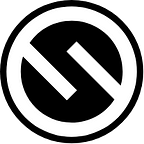How We Designed the LC Waikiki Mobile Application? — E.4: Homepage
Now that we’ve completed the preliminary works, defined our scope, and made the planning that we probably won’t be able to fully comply with, we can now move on to the final design phase. Finally!
But first, commercials :)
Ladies and gentlemens, are we ready?
We started to design from the page that first page to see. It wasn’t surprising. At this point, we have some new features and according to our plan when development begin this choice was going to save time to design other pages.
There were some requests from business and managing teams while the final design was taking shape. The most obvious of these; “stories.”
Stories became very popular especially after Instagram. Even banks used the stories. But, personally, I hate stories. This can be a good feature for social media. When you swipe up, you can go to some url. This is so good. Incomparable blessing for digital marketing. But no for banks or e-commerce sites. Some e-commerce sites or apps are using stories. As a user, you want to see some clothes, want to buy somethings but you visit the homepage, touch a circular image, an full-screen image appear, at the bottom of the page there is an arrow, touch again… Why? Is it just me it seems; but this is a problem, right?
BUT! If nearly every apps has stories, people wants it. Peoples want to moved own experiences to other apps. This is understandable. But I can’t say the same about stories. Because awareness and usage rate does not mean that something can be used everywhere.
I don’t like the stories but this not to mean I won’t use it. Because there are a huge awareness about the stories. We thinked to use this awareness. This was our first decision.
LC Waikiki loves thematic campaigns. They designs whole homepage based on a theme periodically. This can be easier at web side. But in the apps this can be a little bit complex. If we were develop the app a web page this can be happened. But we developed native. We have to move this thematic page designs to the app. That was our second decision.
The wireframe of the design that emerged as a result of our decisions to use the thematic campaign design and awareness of the story feature was as follows;
Especially in campaign seasons, there are too many sales in different categories. At this point, “just a slider” not would not work for us. We used “the stories section” for showing product group sales. In this area, the campaign images for each product group would be designed using the same theme.
And we designed a “storefront image” are. This storefront image will show the the main discourse of the campaign. Also this thematic campaign will support with app icon, splash screen and home page images.
For example, we can use “Summer Fest” theme as like you see below.
We left our ideas and designs about the main categories at the bottom to the second phase and kept it as it was in the old practice. The reason for our decision at this point is related to the scope I mentioned in previous articles. Time is limited baby!
Main question; Did we succeed?
Answer is simple; yeah we did it! In the user researches, it is seen that the experience we designed is in line with what we want to live.
Now it’s time for the second phase!
At next episode I will tell about category page design process.
See ya!
Thanks for reading.
